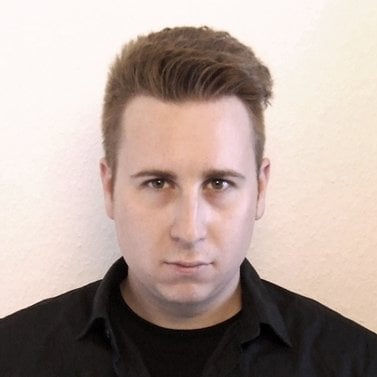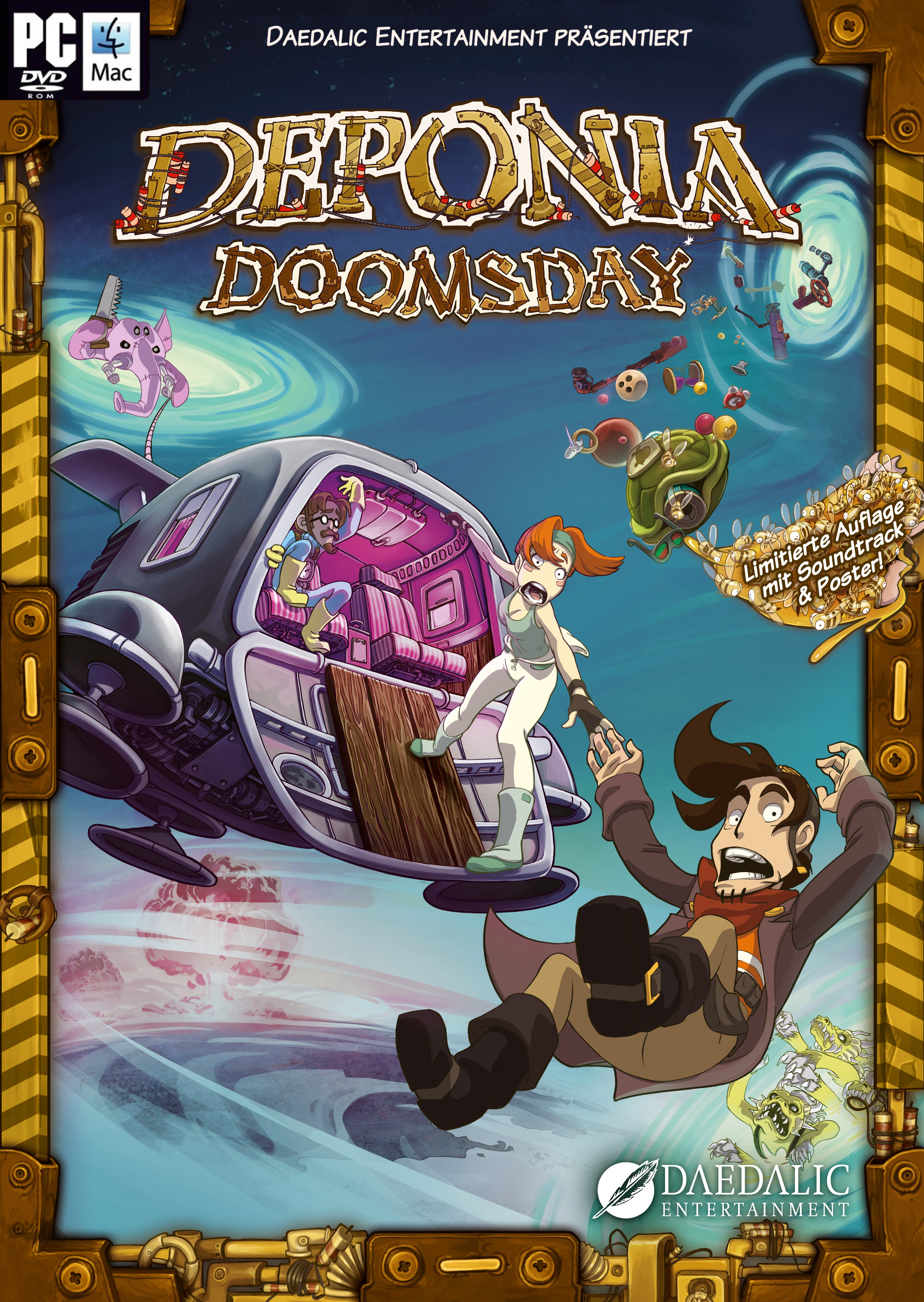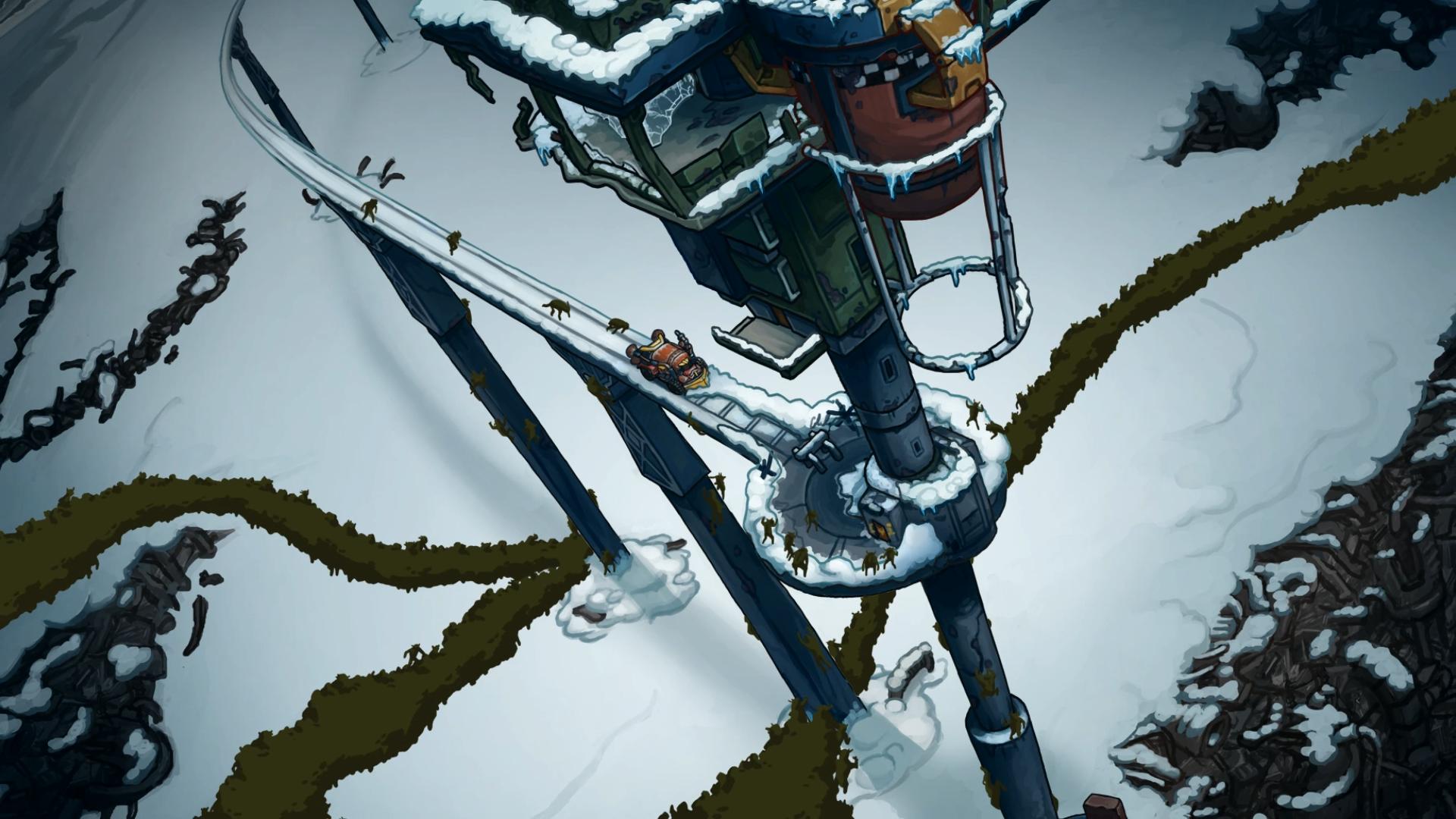The fourth entry in the hand-animated point-and-click Deponia series, Deponia Doomsday, was released to much acclaim earlier this month, and indeed sits pretty as another standard for the genre. Many were surprised, given the title and final tone of the last entry in the supposed trilogy, Goodbye Deponia.
We had a chance to sit down with Daedalic Entertainment’s Producer for the Deponia series, Tom Kersten (TK), to talk about what happened to bring the series back, the challenges of reviving a series that never really died, and what’s next in store for Rufus & Co.

GameSkinny: Last time we spoke, both yourself and [Creative Director and Author] Jan “Poki” Muller-Michaelis insisted that Deponia was just a trilogy. What were some of the conversations behind-the-scenes that led to Deponia Doomsday?
TK: It was in February 2015 when [Daedalic CEO] Carsten [Fichtelmann] and I first discussed the idea of doing another Deponia game. I was busy working on Anna’s Quest at the time, and Poki was overseeing creative direction of all studio projects as well as working on a new concept. However, we saw that some people in the community were asking for another Rufus story – and of course the ending of Deponia 3 (Goodbye Deponia) was always a point of controversy.
Poki soon warmed up to making a new Deponia game, and towards mid-March he already had a basic outline of the chapters of the game and how big they would be. Carsten’s requirements for this game were quite simple, actually – the game needs to come out in March 2016. And, of course, there were certain restrictions on scope and money, all that. This gave both Poki and me quite a challenge. We had to go from having absolutely nothing to a finished game within just barely one year. And of course we would have to meet certain expectations when it comes to scope, graphics, writing, and so on. There were already three [Deponia] games out there that have an average of 90% user score on Steam. Talk about pressure.
GS: That is some pressure to step up to! When you guys finally decided to move forward with a fourth installment, what was the initial focus? What was the key that let you know Doomsday was a go?
TK: The decision – as stated above – was pretty much one that Carsten and myself made. We simply challenged Poki with the task of coming up with a new and exciting installment to the series. Poki is a fantastic author and a great artist, and we believed that he will come up with something great. And I was actually really impressed just how fast he and Rene (the other Deponia Game Designer we had on board this time around, former member of the Harvey’s New Eyes team back in 2011) were able to create the main story plot that revolved around Rufus travelling through time, making this game more of a “parallel-quel” rather than a prequel or a sequel. The minute he presented that concept to us there was no doubt in my mind that this was the right way to go. This shows you what kind of a fantastic designer Poki really is, being able to create something amazing under that kind of pressure.
GS: Were you guys able to bring back all the voice actors, artists, writers, designers, etc.? How important was this to the team? If not, how did you guys navigate the gaps?
TK: We were fortunate enough to get pretty much everybody we needed and wanted to work on the game, to join our team. One of the biggest changes probably was in terms of background art where we unfortunately weren’t able to get Michael Benrad to rejoin the team – he’s the main artist concerning the backgrounds for ALL of the previous Deponia games. Due to scheduling conflicts with his own, current company Beardshaker Games (great guys, check them out here: beardshaker.com) he was unable to return.
I had some doubts at first about how we would be able to absorb this loss but were soon going to be pleasantly surprised when all of the artists that delivered work samples for background art came up with fantastic results. This is all thanks to our Art Director Simone Grünewald, who gave us the right hints towards which of our existing staff as well as freelancers she thought would be up for the task. In the end we had Moritz Manhart (who previously worked for my Anna’s Quest team as an Animator), Irina Zinner and Fabia Zobel (both former Deponia Animation Artists) on board for the main background work, plus a few other people, all of whom delivered top-notch work. I am almost sorry to say that we didn’t miss Michael that much – although it would’ve been great to work with him again since he is a great guy to have around, professionally and personally.
As for the rest of the team, we had a great mix of seasoned Deponia veterans (like our Graphics & Animations Team Lead Gunnar Bergmann and Game Scripter Simon Nguyen) and new additions to the crew, some of which worked on other Daedalic games before (e.g. Marcel Timm, Lead Game Scripter from Anna’s Quest) and some who joined in for the first time but since have found a new home here at the company.
Regarding the voice actors, we were able to get everyone we wanted and needed for the game in terms of recurring parts and – in my opinion – were able to secure some fantastic new talent. A highlight of course has been David Hayter for the part of the Old Rufus right at the beginning of the game or, as we’ve called this character right from the start here in the company, Solid Rufus.
I think it was very important for all of us Leads who had a responsibility for the overall project to build up a team that had the right mix between Deponia veterans and some fresh blood. Over the course of the development there was never any issue that we were unsatisfied with anyone’s work – the biggest problem was, in fact, to build up quite a huge team in a very short amount of time and to find enough new talents that were able to join at the right time.
GS: Outside of the people, old and new, you managed to wrangle in time, were there any other major obstacles during development?
TK: The biggest challenge for a project like this – besides the restrictions in time and money – was the fact that I already had a team of Daedalic 2D artists lined up to start working on the game as early as April 15: that’s Gunnar, Nick, Michael, Tobia and Sina. And a bit later Marcel would follow as the first Game Scripter.
So, we virtually had no real pre-production time and we had to jump right into asset production in April. This means that I had to put a lot of pressure on Poki to come up with a lot of stuff pretty fast because we would have a team of skilled artists waiting for him very soon.
This was a tough situation for both of us that we had to deal with. From that moment on forward until the release of the game, I think that Poki pretty much didn’t sleep at all anymore. It’s hard to tell with him because he always looks kind of tired… maybe it’s because of the beard?
GS: Outside of the 70 new characters, new puzzles, new quips, and new platypuses, what’s new for players this time around?
TK: Well, it’s a classic point & click adventure game so that question is a little mean since we really can’t talk about super new & hot improved graphics and stuff as you would expect from a 3D game. But still, I think we were able to mix up a little bit of new and exciting gameplay elements into it with some more “action-packed” QTE’s (quicktime events) to give the player a wider variety in his/her gaming experience. For us, it was all about the right mix between extensive puzzle sequences and parts of the game during which you would progress a lot faster, parts that would also offer more movie-like sequences that focus on story progression rather than running around between the different scenes examining all the details of the world. In my opinion, Deponia Doomsday is the most cinematic one with a lot more close-up shots than we had in the series before.
But no worries – there’s still the good old Deponia experience in it. We wanted to stay true to the style of gameplay that Deponia has always offered to players. But Poki is constantly growing as a Game Designer and is keen on trying out new stuff, some of which I believe can be found in Deponia Doomsday.
GS: The plot has some pretty heavy elements: destruction of the planet, time travelling, the last survivor, mustaches. Does the tone of Doomsday fit in with the Deponia trilogy? How did things shift in general for this new title?
TK: The working title for the game was ‘Deponia 4‘ for us – simply because it’s the fourth Deponia game that we did. But the way I see it: Deponia Doomsday rather stands for itself than as an addition to the first three games.
The story that Poki wanted to tell about Deponia, about Rufus & Goal, was the trilogy, Deponia, Chaos on Deponia, and Goodbye Deponia. And we honestly didn’t know we would end up doing another Deponia game until February 2015. Deponia Doomsday as a game offers more explanation, more perspective and more background knowledge on the Deponia world as a whole. If you look close enough, you can see that this game is – in a way – a conversation between Poki and the Deponia fan base. It was an outlet for him to offer the fans a deeper understanding on why he had to end things the way he did in Goodbye Deponia, why this was in fact the only outcome that was possible for this story, his story.
I really adore the fact that Poki went to a bit of a darker place right at the start of the game to set a bit of a tone of what I believe many fans must have felt at the end of Goodbye. Deponia Doomsday offers deep thought and a sense of closure about the events in Deponia 1 to 3. Some people might be disappointed again about the way Deponia Doomsday plays out at the end, and that’s alright because we are all human beings with different feelings, different states of mind.
I just want to say that – in my opinion – Deponia has always been about the ride, not about the destination (the “Goal”). And to Poki personally I would just like to say: Thanks for the ride! 🙂
GS: Not that this couldn’t change in the future like it has in the past, but will we see more Rufusian adventures after Doomsday? Can we expect another trilogy?
TK: Well, you should never say never in this business. After all we said ‘No more’ after the third Deponia…
But honestly I cannot imagine how we could come up with a fifth installment. I think we have told all there is to tell about Rufus and Goal. We certainly don’t have any plans to make this a trilogy yet again. As I mentioned earlier, Deponia Doomsday stands for itself.
And I truly hope that we were able to bring joy and happiness and maybe a little bit of self-reflection to our fans with this game. After all, this is why we make these games, this is what we strive for.
Thanks again to Producer Tom Kersten for giving us some insight into Deponia and the creative powerhouse that is Daedalic Entertainment! You can check out Deponia Doomsday for 10% off (until March 8) on Steam, and on the Humble Store. Hit ’em up online @daedalic or facebook.com/daedalic.











Published: Mar 7, 2016 05:54 am